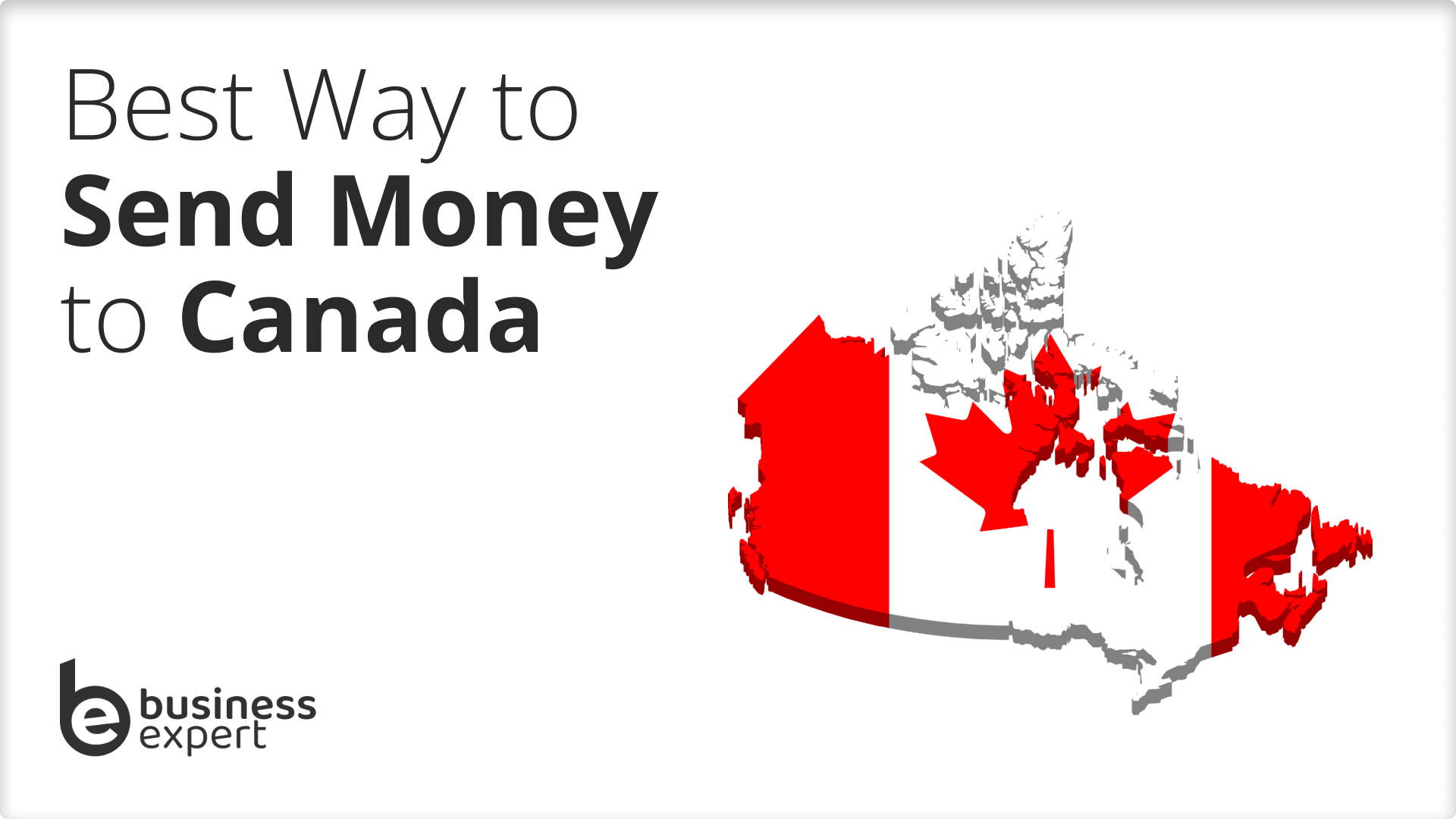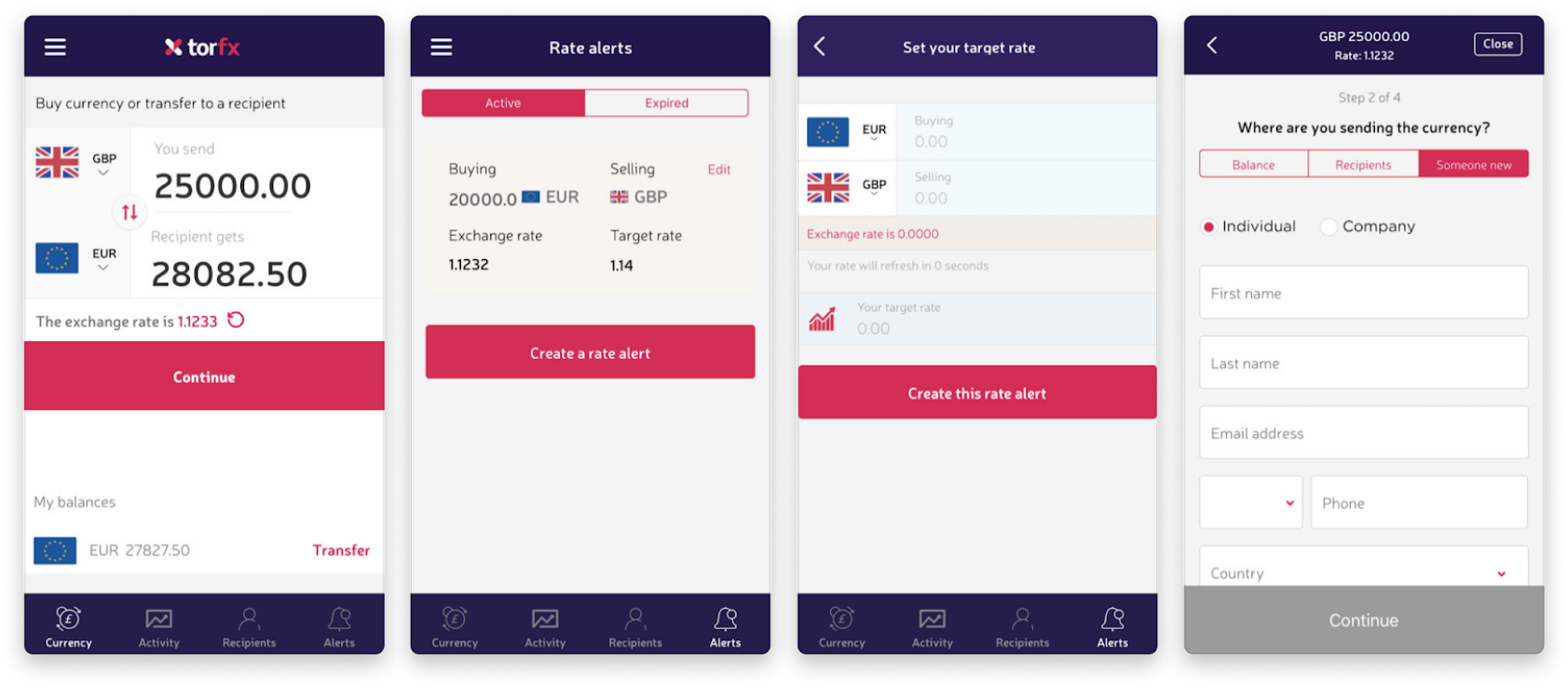Sending money to Canada can feel overwhelming, whether you’re a business owner or an individual.
With so many options available, knowing which is best can be confusing.
In this article, we’ll look at the pros and cons of the most popular ways to send money, from online money transfer services to traditional bank transfers.
Whether you’re looking for speed, affordability, or convenience, by the end of this article, I’ll help you decide the best way to send money to Canada.

- My Verdict
- What’s the Cheapest Way to Send Money to Canada?
- What’s the Fastest Way to Send Money to Canada?
- Can I Send Money to Canada Online?
- Sending Large Amounts of Money to Canada
- Can I Set Up Regular Payments to Canada?
- Sending Money to Businesses in Canada
- How to Send Money to Canada
- What Details Do I Need to Send Money to Canada?
- How Much Does it Cost to Send Money to Canada?
- How Long Does it Take to Send Money to Canada?
- Frequently Asked Questions
Best Way to Send Money to Canada: My Verdict
When sending money to Canada from the UK, you have two main options: online money transfer services and bank transfers.
Online money transfer services like TorFX and Remitly offer competitive exchange rates, lower fees, and faster transfer times. This makes it one of the most cost-effective ways to send money to Canada and ideal for urgent transfers. However, some providers may have transfer limits, which could be an issue for larger transfers.
On the other hand, bank transfers provide familiarity and security, with high maximum transfer limits suitable for larger amounts. Although reliable, bank transfers take longer than online money transfer services, so they aren’t ideal for urgent transfers. They also have higher fees and a less favourable exchange rate, making them more expensive.
What’s the Cheapest Way to Send Money to Canada?
| Service | Transfer Fee (£100) | Exchange Rate (£100) | Transfer Fee (£2,000) | Exchange Rate (£2,000) | Learn More |
|---|---|---|---|---|---|
| TorFX | £0.00 | 1.7179 | £0.00 | 1.7179 | Visit TorFX |
| Remitly | £0.00 for new customers or £2.99 for existing. | 1.6838 for card payments, 1.7044 for bank transfers, or 1.7178 for new customers. | £0 | 1.6838 for card payments, 1.7044 for bank transfers, or 1.7178 for new customers. | Visit Remitly |
| Currencies Direct | £0.00 | 1.7162 | £0.00 | 1.7163 | Visit Currencies Direct |
| OFX | £0.00 | 1.7156 | £0.00 | 1.7175 | Visit OFX |
| Revolut | £0.50 | 1.72035 | £13.00 | 1.72037 | Visit Revolut |
| Wise | £0.81 for bank transfers and SWIFT payments or £1.22 for card payments | 1.7245 | £9.70 for bank transfers and SWIFT payments or £18.02 for card payments | 1.7246 | Visit Wise |
| XE | £1.99 | 1.7168 | £0.00 | 1.7169 | Visit XE |
| Atlantic | £3.00 | 1.724510 | £3.00 | 1.724510 | Visit Atlantic |
TorFX is the cheapest way to send money to Canada, offering a competitive exchange rate of 1.7179 and free transfers.
Currencies Direct and OFX also don’t charge a transfer fee, but their exchange rates are less favourable, meaning you’d get more CAD for your GBP using TorFX.
At the time of writing, Remitly offered several promotions for new customers, including an enhanced exchange rate and free transfers. However, TorFX would still be more cost-effective.
Similarly, you can access higher exchange rates of 1.72+ using Revolut and Wise, but any potential gain you would have made is cancelled out by the transfer fees, which can be significant for large transfers.

What’s the Fastest Way to Send Money to Canada?
| Service | Transfer Speed | Learn More |
|---|---|---|
| Remitly | Within minutes by card or within 2 hours by bank transfer | Visit Remitly |
| XE | Same day | Visit XE |
| Revolut | Same business day | Visit Revolut |
| Wise | 1 business day | Visit Wise |
| Atlantic | 1 business day for a 0.1% fee or 3 business days as standard | Visit Atlantic |
| Currencies Direct | 1 to 3 working days | Visit Currencies Direct |
| OFX | 1 to 5 days | Visit OFX |
| TorFX | Within 2 working days | Visit TorFX |
Remitly is the fastest way to send money to Canada, with funds typically received within 2 hours of payment.
XE and Revolut also offer fast transfers as standard, completing the transaction the same business day.
For urgent or time-sensitive situations where speed is essential, some providers like Atlantic offer expedited transfers for an additional fee, allowing your recipient in Canada to receive your money quicker.
As you can see from the table, most providers I evaluated typically send money to Canada within three working days.

Can I Send Money to Canada Online?
There are several ways you can send money to Canada online.
- Online Money Transfer Services: Ideal for sending money quickly and securely to Canada from the comfort of your home, online money transfer services have competitive exchange rates and lower fees than other methods. However, some services have transfer limits, which may be an issue for large transfers.
- Bank Transfers: Suitable for larger transfers, bank transfers can be used for regular payments like salaries or bills. Although secure and reliable, they have slower processing times and less competitive exchange rates.
- Digital Wallets: Convenient for seeding smaller amounts to friends or family in Canada, digital wallets like PayPal offer instant transfers on user-friendly platforms. However, transfer fees are high, and digital wallets often have a low maximum transfer amount limit.
- Cash Pickup Services: Although this method is ideal when the recipient needs access to cash quickly or doesn’t have a bank account, it’s less convenient and more expensive than alternative methods.
- Prepaid Debit Cards: Suitable for recipients without a bank account, prepaid debit cards are widely accepted at shops and ATMs. However, they have activation, loading and withdrawal fees, reducing the amount the recipient can access.
- Cryptocurrency: This method has potentially lower fees than traditional methods, but values are highly volatile, and it has limited acceptance for everyday transactions in Canada.
Sending Large Amounts of Money to Canada
| Service | Transfer Limit | Learn More |
|---|---|---|
| Currencies Direct | No limit | Visit Currencies Direct |
| OFX | No limit | Visit OFX |
| TorFX | No limit | Visit TorFX |
| Revolut | Most transfers have no limit. Where one applies, it will be shown in-app before you initiate your transfer. | Visit Revolut |
| Wise | Up to £5,000,000 per transfer, depending on payment method | Visit Wise |
| XE | £350,000 per transfer | Visit XE |
| Atlantic | 200,000 CAD per transfer (approx £116,066) | Visit Atlantic |
| Remitly | Tiered limits vary between accounts. 24-hour limit: £5,000 to £25,000. 30 Day limit: £15,000 to £25,000. 180-day limit: £50,000 to £150,000. | Visit Remitly |
The best way to send large amounts of money from the UK to Canada is through a reliable online money transfer service like Currencies Direct, OFX, and TorFX.
Unlike other services, these providers don’t limit the amount of money you can send to Canada, allowing you to make large transfers without splitting it into multiple transactions.
When sending large amounts of money to Canada from the UK, choosing a method that offers competitive exchange rates and low fees is vital to maximise the value of your transfer.
Online money transfer services typically offer competitive exchange rates close to the mid-market rate, which means you get more Canadian dollars for your pounds. Additionally, many providers charge low or no transfer fees, helping you save money on transaction costs.
Currencies Direct, OFX and TorFX also provide a dedicated account manager for large transfers, helping you navigate the transfer process and answer any questions.
However, a traditional bank transfer may suit those who prefer in-person transfers or use familiar providers.
Although secure and convenient, bank transfers are more expensive and slower than online money transfer services, making them unsuitable for time-sensitive transfers to Canada.
Can I Set Up Regular Payments to Canada?
You can set up regular payments to Canada in several ways.
- Online Money Transfer Services: Providers like TorFX and Remitly are convenient and easy to set up through online platforms. Although cost-effective, some services may have transfer limits or fees for recurring transfers.
- Direct Debits: Suitable for recurring payments with fixed amounts like utility bills or subscriptions, direct debits are automatically processed without manual intervention. However, they have limited availability for international payments and may not be accepted by all Canadian businesses.
- Standing Orders: Although easy to set up, standing orders lack the flexibility to change payment amounts or timings without cancelling them and setting a new one up.
- Digital Wallets: These are best used for sending smaller amounts to friends and family. Digital wallets like PayPal are fast but have high transfer and currency conversion fees.
Sending Money to Businesses in Canada
Online money transfer services like TorFX and OFX allow you to send funds electronically from your UK bank to the business’s Canadian bank account.
Due to their ease of use and competitive exchange rates, they’re ideal for regular business payments, such as supplier invoices or international payroll.
Although many don’t restrict the amount you can send to Canada, some services may have transfer limits or fees for larger transactions.
Another popular alternative is initiating an international bank transfer to popular Canadian banks like RBS and BMO.
Bank transfers are suitable for large transactions where security and reliability are paramount due to bank-level security and regulatory compliance.
However, they have longer processing times than online money transfer services, typically taking 3 to 5+ business days.
Depending on the amount you send, you may be required to provide further information on the business’s 9-digit Business Number or Canadian Social Insurance Number (SIN) for tax purposes.
You may also be asked for additional documentation like an invoice, contract and government-issued ID to comply with anti-money laundering (AML) and Know Your Customer (KYC) regulatory requirements.
How to Send Money to Canada
How you can fund your transfer to Canada depends on your transfer method and provider.
Some of the most popular methods include:
- Bank Transfer: Although ideal for funding large transfers to Canada securely and conveniently, bank transfers take longer to process than other payment methods.
- Debit Card: Suitable for small transfers, paying for your transfer using a debit card is fast. Although cheaper than funding your transfer by credit card, debit cards have more limited consumer protection for disputed transactions.
- Credit Card: This method is excellent for larger transfers where you want to take advantage of credit card benefits like rewards or cashback. It’s similar to paying with a debit card but usually has higher fees and interest charges.
- Digital Wallet: Convenient for transferring smaller amounts to Canada quickly and securely, digital wallets like PayPal are near-instant and easy to use. However, they have limited acceptance compared to traditional payment methods.
- Cash: Suitable for those who don’t have a traditional bank account, cash payments are processed quickly but are more inconvenient and subject to low cash handling limits
- Cheque: This traditional method is ideal for larger transactions but is used less frequently for funding transfers to Canada as it takes longer to process and has a higher fraud risk.
What Details Do I Need to Send Money to Canada?
To send money to Canada from the UK, you’ll need the following information and documents:
- Recipient’s Contact Details: Including the full legal or registered business name, address, phone number and email address.
- Recipient’s Bank Details: Including the recipient’s Canadian bank account number, the bank name, branch address, and the bank’s 8-11 character SWIFT/BIC code. Some providers may also require the recipient bank’s 5-digit routing number, although this is mainly used for domestic transfers.
- Alternative Payment Details: If you send money to a digital wallet or another alternative method, you’ll need the recipient’s account’s mobile number or email address.
- Further Information: Your provider may ask for extra details like the purpose of your transfer or their 9-digit Canadian Social Insurance Number (SIN) or Business Number (BN) for tax purposes.
- Additional Documentation: Depending on how much you send money to Canada, you may have to provide further documents to comply with regulatory requirements. These could include copies of your government-issued ID like a passport, proof of address, or source of funds.
How Much Does it Cost to Send Money to Canada?
You might face different fees when sending money to Canada from the UK.
Transfer Fees
Your service provider may charge a transfer fee for sending money to Canada.
It can vary widely depending on the provider and the transfer amount.
Some services may offer flat fees, while others may charge a percentage of the amount sent.
Transfer fees typically range between £0 and £5 for online money transfer services or £10 and £30 for bank transfers.
Exchange Rate Fees
You may encounter exchange rate markups when converting your money from British pounds (GBP) to Canadian dollars (CAD).
This means that the exchange rate offered by the service provider may be slightly lower than the mid-market rate, resulting in additional costs.
Whilst online money transfer services have an exchange rate markup of approximately 0.5% to 2% above the mid-market range, banks can have a larger markup of 1% to 3%.
Bank Fees
If you’re using a bank for the transfer, they may charge various fees, including processing fees for international transfers and intermediary bank charges.
These fees can vary depending on your bank’s policies and transfer method.
Intermediary bank fees generally range between £5 to £20 per bank involved.
Recipient Fees
The recipient’s bank in Canada may also impose charges for receiving the funds, particularly for international transfers.
These fees range from £5 to £15 for incoming wire transfers and 1% to 3% for currency conversion fees.
Additional Charges
You may encounter additional charges for special services such as express transfers or expedited processing.
The cost varies depending on the provider and the level of urgency you require for your transfer.
These charges range from £5 to £20+ and may vary based on the transfer amount, destination, and the provider’s policies.
How Long Does it Take to Send Money to Canada?
How long it takes to send money to Canada depends on your transfer method.
Online money transfer services typically take around 2 to 4 business days as standard, with some providers like Atlantic, Remitly and Revolut offering faster transfers that can be completed in as little as a few minutes.
Bank transfers typically take longer, ranging from 3 to 5 business days. This longer processing time is due to the various steps involved in international transactions, including verification and clearance processes by multiple banks along the transfer route.
Bank processing times are typically slower on weekends and public holidays, which can delay the transfer. Some online services may also have cut-off times for processing transactions, affecting transfer times.
Generally, transfers paid by card are processed faster than those funded by bank transfers.
Larger transfers may require additional verification or compliance checks, which can prolong the processing time compared to smaller transfers.
My Methodology
I followed the following process to research and write this article about the best way to send money to Canada:
- Research: I gathered information on various methods of sending money to Canada, including online money transfer services, bank transfers, and other payment methods. This involved reviewing reputable financial websites, official service provider websites, and industry reports to understand the available features, fees, and transfer options.
- Provider Selection: Transfer service providers were selected based on their reputation, reliability, and suitability for sending money to Canada. This selection process involved considering transfer fees, exchange rates, transfer speed, transfer limits, and user reviews to compare options comprehensively.
- Comparison: I evaluated the selected providers based on various criteria, including transfer fees, exchange rates, transfer limits, transfer speed, customer support, and user experience. This involved creating tables to compare key features side by side, allowing readers to make informed decisions based on their specific needs and preferences.
- Updates: The information contained in this article was accurate at the time of writing but is subject to change. I will return periodically to update any changes in fees, exchange rates, or service offerings to provide readers with the most current information.
Frequently Asked Questions
Can I send a cheque to Canada?
Yes, you can send a cheque to Canada, but there may be more efficient methods. Cheques can take a long time to clear and may incur fees for international processing. Sending money using an online money transfer service like Wise or Remitly would be faster and cheaper.
What’s the safest way to send money to Canada?
The safest way to send money to Canada is through reputable and regulated money transfer services that offer secure encryption and fraud prevention measures. Choose services like Currencies Direct and TorFX with a track record of reliability, transparent fee structures, and strong customer support.
Can I transfer money from a UK bank to a Canadian bank account?
Yes, you can transfer money from a UK bank to a Canadian bank account using various methods such as online money transfer services like OFX and Atlantic or international bank transfers.
How do I send money to Canada without a bank account?
You can send money to Canada without a bank account using alternative methods such as online money transfer services like Western Union or MoneyGram, where the recipient can collect the funds in cash from designated locations.
However, keep in mind that these services may charge higher fees and offer less favourable exchange rates compared to online money transfer services like Revolut and XE.
Can I send the money to Canada through PayPal?
Yes, you can send money to Canada through PayPal, but it may not be the most cost-effective option. PayPal usually has higher transfer fees and a weaker exchange rate than online money transfer services like Wise.
How can I send money to Canada without PayPal?
You can send money to Canada without using PayPal by utilising other online money transfer services such as Currencies Direct or TorFX. These services allow you to send funds directly to popular Canadian banks like CIC and Bank of Nova Scotia at a lower cost than traditional bank transfers.
Alternatively, you can consider using international wire transfers through your bank, although this method may involve higher fees and longer processing times.
